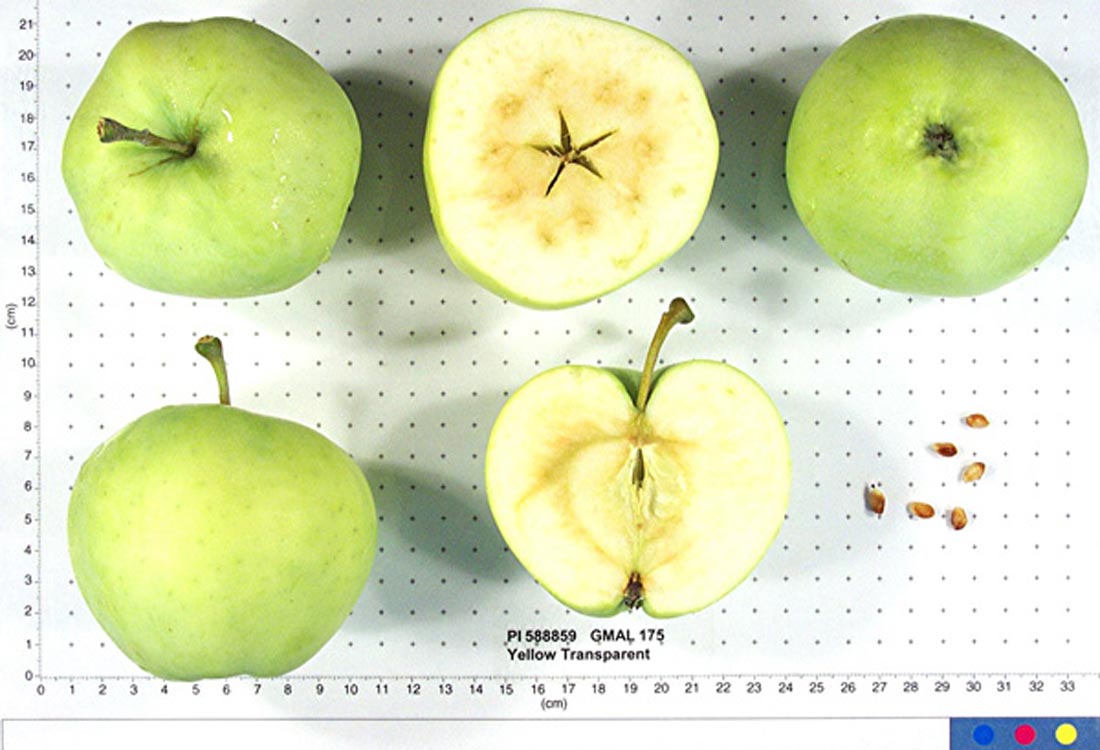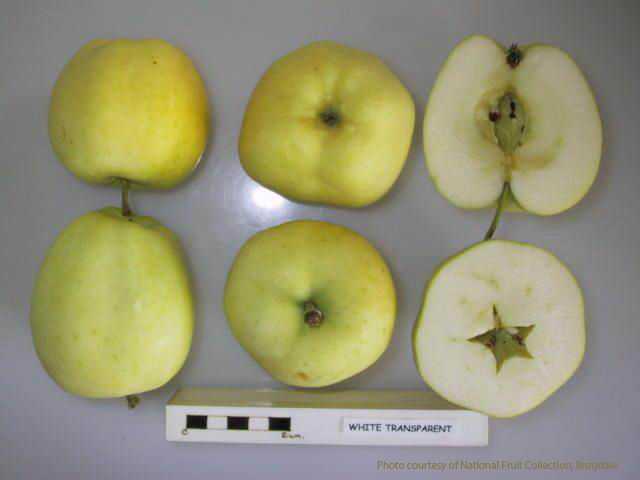Pomiferous
Welcome to the world's most extensive apples (pommes) database.
Information on over 7,000 apples is available here, all carefully researched and provided in a way that is easy to navigate.
Yellow Transparent
type: Culinary, Dessert, Jelly, Pie, Sauce
synonyms: Early June, Early June Transparent, Early Transparent, June Transparent, Grand Sultan, Grand-Sultan, Russian Transparent, White Transparent, Glass Apple
summary: This pale yellow apple is one of the most popular early ripening varieties, initially good for use in the kitchen and later for fresh eating. It was already widely grown around Moscow when Napoleon invaded Russia in 1812. Makes an excellent, slightly tart apple sauce.
identification: Medium size, often very large, round-conical and heavily ridged at the calyx basin.; often asymmetric. The smooth skin is very thin and pale greenish yellow maturing to yellow, over which are some patches of thin russet and an abundance of russet lenticels. The stem is medium long, stout and set in a medium deep, somewhat narrow and russetted cavity. A slight greasiness develops on the skin as the fruit ripens.
characteristics: Flesh is white, coarse-grained. Sweet, very juicy and brisk. Mild flavour. Bruises easily and becomes mealy when kept too long.
uses: This early cooking apple makes excellent apple sauce and is in fact harvested a little bit under-ripe to more tartness to this purpose. Often used for pies as well.
origins: The world’s best known summer apple was found growing as a wild seedling of unknown parentage sometime during the early 1800s in the Baltic region of northern Europe and subsequently propagated by the M. Wagner nursery of Riga (Latvia). In 1852, nurseryman André Leroy of Angers (France) purchased a number of young trees from Wagner's nursery for distribution in Europe and, in 1870, the variety was also introduced in North America.
cultivation: On its own roots, it is a moderately vigorous and upright tree with weeping branches that tend to spread after a few years. Bears fruit on short, spur-like branches. Early blooming makes it susceptible to late frost. Also, it needs to be thinned after fruit set in order to manage its tendency to bear biennially. Tends to start bearing quite young and produces consistently heavy crops.
mutations: Perrine Yellow Transparent
cold storage: Turns soft quickly after picking and becomes woolly and dry within a few days.
vulnerabilities: Resistant to rust, scab but highly susceptible to blight and mildew.
harvest: Ready for harvest early in the third period, 75 to 90 days after petal fall. The fruit has a tendency to drop as it ripens.
pollination group: B
pollination peak: 6
ploidism: Partially self-fertile, but produces the best crops in the presence of a source of viable pollen.
harvest period: 3
flowers: White
hardiness: 3
Donate a cider?
©2016-2021 Pomiferous.com. All rights reserved

